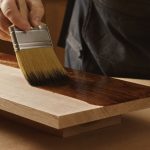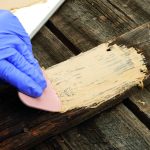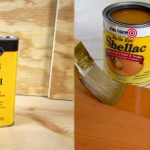What is Warm Satin Polyurethane? Its Characteristics, Disadvantages, and Uses
Satin polyurethane is among the popular finish types when working with hardwoods. It gives the wood a sheen appearance that is between matte and semi-glossy. Warm satin polyurethane is often a popular option among the half-a-dozen satin polyurethane finishes.
But what is warm satin polyurethane? Warm satin polyurethane is a finish that gives the wood a yellowish or golden tint. This warm finish enhances the wood’s natural color and adds richness to the finish. It is usable on floors and furniture to protect them against scratches, dust, and stains.
The article focuses on warm satin polyurethane, highlighting the unique characteristics that set it apart from other satin finishes. Therefore, read on.
What is Warm Satin Polyurethane?
Polyurethane finishes are made by combining various resins, solvents, and additives that give them resilience and durability. These finishes resist moisture, stain, and chemical attacks and give a wooden surface an appealing look.
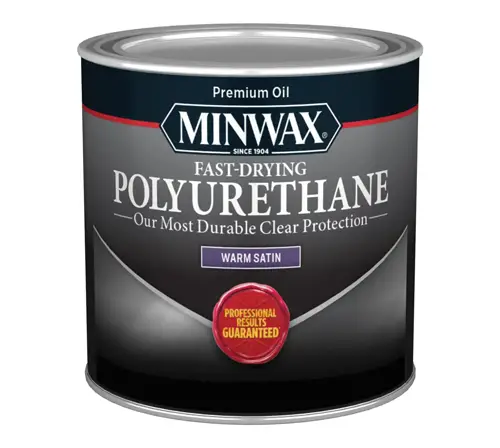
There are usually four sheen levels of polyurethane, each based on how much each can reflect light. They include
- Matte
- Satin
- Semi-gloss
- High gloss
And matte is the least reflective and high gloss the most.
Warm satin polyurethane falls under the satin category, which reflects less light but a little more than matte. Under the satin category, there are at least five other types besides warm satin polyurethane. They include
- Clear
- Ultra-matte
- Low-odor
- High-gloss
- Fast-drying satin polyurethane
A warm satin polyurethane finish usually has a golden or yellowish hue that intensifies as it ages. The finish enhances the wood’s color and can hide blemishes in wood while still showing it aesthetically.
Types of Warm Satin Polyurethane Finish
There are usually two types of warm satin polyurethane finish, with their differences being their formulation. They include;
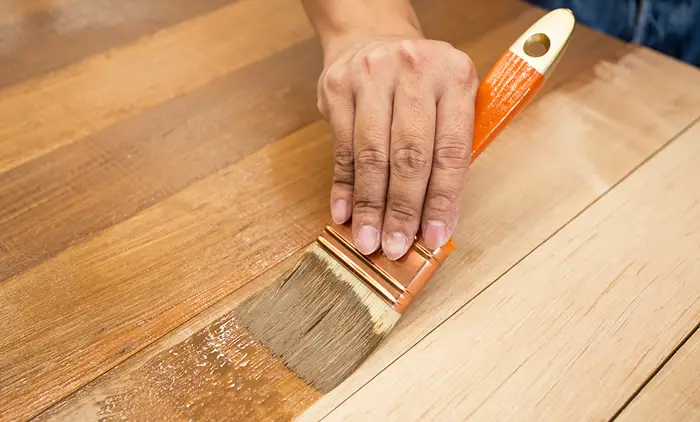
1. Warm Oil-based Satin Polyurethane
The first type of warm satin finish is oil-based and is known for its durability, which makes it ideal for high-traffic areas. Like other oil-based finishes, this type takes longer to dry and has a strong odor.
2. Warm Water-based Satin Polyurethane
The other type of warm satin polyurethane is water-based, which is more popular since it’s eco-friendly. It has low volatile organic compounds (VOCs,) which means it is less likely to cause health problems. Compared to the oil-based type, it’s less durable and ideal for furniture and trims.
Characteristics of Warm Satin Polyurethane?
The following section lists some characteristics of the warm satin polyurethane finish.
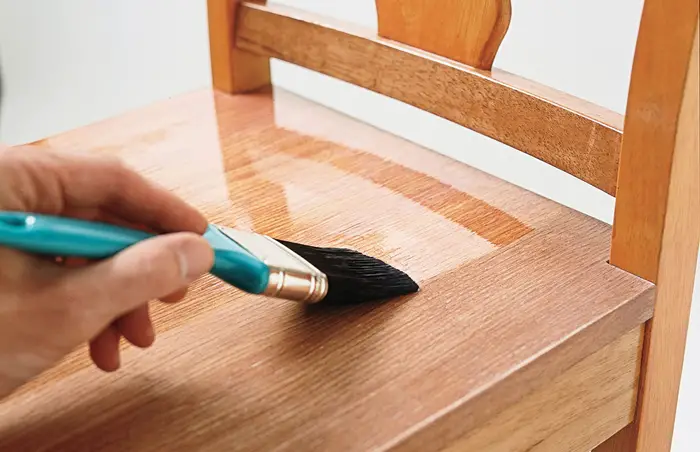
Warm Tone
One of the major characteristics of the warm satin polyurethane finish is its appearance. The golden-yellowish tint that it gives to a surface is far from what most other polyurethane finishes do.
It can be used on most wooden surfaces that need a warm and inviting appearance, including living spaces and bedrooms. It can be applied on furniture, floors, and other wooden surfaces to add a deep and rich finish.
Satin Sheen
Like most other satin polyurethane finishes, warm satin polyurethane finish has a subtle shine that is not too reflective. These types of finish are known to show less dirt and wear when compared to high-gloss.
Can Hide Blemishes in a Wood
Since the warm satin polyurethane finish enhances the color of the wood, it can easily hide blemishes in the wood. These blemishes include small scratches and dents, among other imperfections on the wood.
It achieves this by adding a golden-yellowish tint to the blemish and minimizing it. This fact makes it a good choice of finish when working on furniture restoration, where wood often has small imperfections. However, like other finishes, it cannot completely hide major blemishes in the wood.
Durable protection
Like other polyurethane finishes, warm satin polyurethane finish provides durable protection to wood. Its chemical properties and composition contribute to its durability.
It adheres well, thanks to various ingredients, including Toluene diisocyanate, which also helps in cross-linking. This and other ingredients and additives give warm satin polyurethane its protective properties.
Comparison Between Warm and Clear Satin Polyurethane
The following list compares the two types of satin polyurethane.
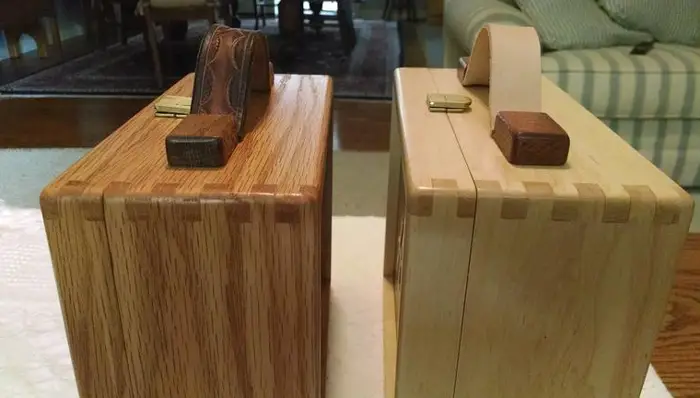
1. Appearance
Appearance is the main difference between the warm and clear satin polyurethane finish. While the warm satin finish gives the wood a golden-yellow tint, the clear one is completely transparent.
2. Use
Though both types of satin polyurethane finish can provide a protective cover to the wooden surface, they differ in some of their other uses. For instance, the warm satin finish can enhance the wood’s appearance, while the clear one doesn’t alter its natural color.
Also, as stated earlier, the golden tint in the warm satin finish is ideal for hiding small scratches and dents on the wood. This additional advantage is not realized when using a clear satin finish since it is transparent.
3. Sheen
The two types of finishes have many similarities since both are satin, among them, their sheen levels. These levels are similar and usually have a less glossy appearance on the wood.
4. Application
Both finishes are also easy to apply through brushing, spraying, or rolling. They dry faster, allowing users to add several coats in a day, especially those made with water-based formulations.
The finishes are also used on various wooden surfaces, including cabinets, floors, and furniture. They also work ideally on hardwoods and softwoods and bare and stained surfaces.
Disadvantages of Using Warm Satin Polyurethane
While warm satin polyurethane is a popular option, it has a few disadvantages that you ought to know. They include;
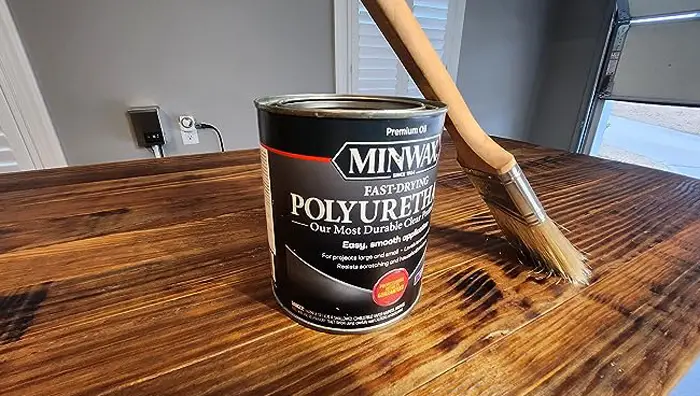
1. Costly
One of the disadvantages of using warm satin polyurethane is that it tends to be more expensive than other types. The cost can be a disadvantage, especially when working on a tight budget.
2. Hard to Repair
Since the golden-yellow tint from the warm satin polyurethane intensifies as time goes on, repairing a damaged part can be difficult. Repairing a damaged part requires sanding and applying a finish to a larger area for an even tint. This project can be time and labor-intensive and, in some cases, undoable.
3. Not Transparent
The golden-yellow tint on the warm satin polyurethane usually covers some of the wood details. Covering some of the wood’s details can be a disadvantage for people who want to see more of the wood’s natural characteristics.
4. Health Risk
Like most other polyurethane finishes, the warm satin finish can affect your health, especially oil-based ones. To avoid these health effects, work in a well-ventilated room and wear protective equipment
When is it Ideal to Use Warm Satin Polyurethane?
While most satin finishes can get the job done in most projects, there are ideal times when you may need to use warm satin polyurethane instead. They include;
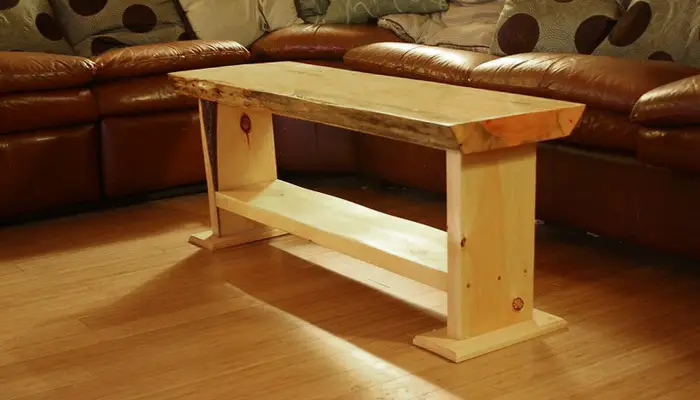
1. Furniture Restoration Projects
Most furniture restoration projects involve working with old furniture that has blemishes. In this instance, you need to use warm satin polyurethane, which will cover most imperfections.
2. When in Need to Enhance Wood
You can also use the warm finish if you’re after a finish that can enhance the wood’s color. Since most other finishes retain the wood’s original color, the warm finish makes a great option when you’re looking for extra enhancement.
3. Need a Low-Level Sheen
Another instance when you need to use this finish is when you need a low-level sheen on your project. Other warm finishes, like the warm gloss polyurethane finish, give a shiny appearance to the wood.
If you’re looking to achieve a unique finish on your wood projects, you might be interested in learning about how to thin polyurethane and explore the benefits of warm satin polyurethane. Additionally, if you’re considering a more drastic change and wondering about how to paint over polyurethane, our guide offers valuable insights and steps for this creative endeavor. We’re dedicated to providing you with the knowledge and techniques to enhance your woodworking experiences.FAQs
Still have questions about the warm satin polyurethane finish? Here are some frequently asked questions and answers.
Q1. Is the Warm Satin Polyurethane finish Clear?
A warm satin polyurethane finish is not entirely clear but is transparent. When applied to the wood, it gives it a golden-yellowish tint, which can change its appearance. Use the clear satin finish if looking for a clear option that won’t alter the wood’s color.
Q2. Is Warm Satin Polyurethane Shiny?
Warm satin polyurethane is not usually shiny and has a low sheen level. However, it is not as dull as the matte finish and reflects at least some light but not as much as a semi-gloss.
Q3. Does Warm Satin Polyurethane have the Same Color as Warm Semi-gloss Polyurethane?
The two warm finishes give a wood golden-yellow tint or luster. However, the semi-gloss finish is shinier and reflects more light than the satin option. However, both have protective properties and are ideal for various uses.
Bottom Line
Warm satin polyurethane is a satin finish known to give wood a golden-yellow luster. Like most other types of finishes, it’s available in two options, one being oil-based and the other water-based. It has various characteristics, including its ability to enhance the wood’s color.
Compared to the clear option of the satin finish, it alters the natural wood color, giving it a golden-yellow tint. One downside of using it is that it can be costly and almost unrepairable. However, it is a good option for furniture restoration projects or when you’re looking to enhance the wood’s finish.


